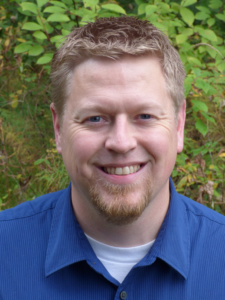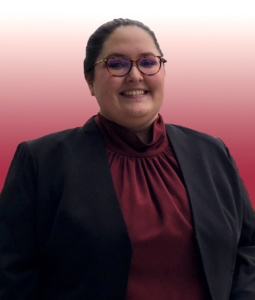News & Updates — Grantee Spotlight
Grantee Spotlight: Building Capacity for Tribal Health Providers to Deliver OUD Treatment in Rural Alaska
November 11, 2021Between 2015 and 2019, Alaska’s Tribal health providers reported a threefold increase in the number of individuals diagnosed with opioid use disorder (OUD). Overdoses involving fentanyl have also increased across the state, doubling in the first half of 2020 compared with the same period a year before. The Alaska Native Tribal Health Consortium, which supports Tribal health organizations in meeting the health needs of more than 200,000 Alaska Native and American Indian people, is using funding from FORE to enhance access to medications for opioid use disorder (MOUD) in the state’s rural and remote regions. FORE spoke to Cody Chipp, Ph.D., the consortium’s behavioral health director, and Jackie Engebretson, M.S.W., a senior program manager, about their efforts.
 Alaska residents living in remote regions often travel by air, boat, or snowmobile to receive medical care, making opioid use disorder treatment less accessible.
Alaska residents living in remote regions often travel by air, boat, or snowmobile to receive medical care, making opioid use disorder treatment less accessible.
What are the biggest barriers to providing treatment for OUD in isolated regions of Alaska? Is it a lack of providers? Stigma against using MOUD? Or the logistical challenges that patients face in getting to clinicians?
Cody Chipp: It’s all the above. The state of Alaska is gigantic. It is so big that Texas would fit inside Alaska twice. Residents living in rural communities are often geographically disconnected from road systems. In order to access in-person medical care or visit with loved ones, many rural residents need to travel by small aircraft, boat, or snowmachine, depending on the season. Because these communities are so small, many depend on certified community health aides or practitioners (CHA/Ps) to act as the eyes, ears, and hands of providers who connect to patients via telehealth platforms. This system creates some challenges when it comes to treating people with MOUD. To initiate treatment, a patient would have to travel, often many hours, to a larger city for an in-person visit and then travel home. To minimize this, our team is working to increase the capacity of Tribal communities to deliver MOUD closer to home through regional hubs throughout the state.
Tell us more about your approach?
 Cody Chipp: We’ve focused on providing training and technical support so providers feel confident to deliver care. We created a toolkit that goes over the nuts and bolts of how to set up a clinic and store and dispense medication. To promote focus on patients’ whole well-being, it also covers traditional healing practices, ways of involving families, and ways to address the impacts of intergenerational trauma and colonization. The toolkit was distributed to medical and behavioral health directors throughout the Alaska Tribal Health System. Primary care providers, behavioral health directors, and the CHA/Ps from rural Tribal clinics and regional Tribal health organizations are then invited to participate in teleconferences twice a month. These teleconferences are an opportunity for them to connect with our addiction medicine specialists, ask them questions, and talk through challenging cases. We also provide consultations to individuals and organizations through our clinical hub of specialists, which includes a diverse mix of staff including experts in addiction medicine, psychiatry, pharmacy, psychologists, and peer support specialists.
Cody Chipp: We’ve focused on providing training and technical support so providers feel confident to deliver care. We created a toolkit that goes over the nuts and bolts of how to set up a clinic and store and dispense medication. To promote focus on patients’ whole well-being, it also covers traditional healing practices, ways of involving families, and ways to address the impacts of intergenerational trauma and colonization. The toolkit was distributed to medical and behavioral health directors throughout the Alaska Tribal Health System. Primary care providers, behavioral health directors, and the CHA/Ps from rural Tribal clinics and regional Tribal health organizations are then invited to participate in teleconferences twice a month. These teleconferences are an opportunity for them to connect with our addiction medicine specialists, ask them questions, and talk through challenging cases. We also provide consultations to individuals and organizations through our clinical hub of specialists, which includes a diverse mix of staff including experts in addiction medicine, psychiatry, pharmacy, psychologists, and peer support specialists.
What have you learned from the teleconferences?
Jackie Engebretson: We started them at the end of January with a modest goal of having five different organizations participate. We ended up with 23, including some from outside the Alaska Tribal Health System. It’s not just prescribers who attend, but also nurses, CHA/Ps, and prevention staff. They are interested in topics such as managing MOUD during pregnancy and how to care for patients using multiple substances, particularly methamphetamines. It follows the Project ECHO model: people from different areas of the state present their cases and we strategize together. A lot of the challenges are related to geography — how to ensure continuity of care when a person starts treatment in Anchorage and continues in their home community. In smaller communities, a lot of people leave home for long periods of time to work in the commercial fishing industry or the oil industry. It’s important to have good communication among providers who are caring for these patients.
Cody Chipp: They are never easy cases, which is why people are seeking support. They involve pregnancies, housing instability and poverty, as well as complex medical issues. One of the things we’ve been successful with is instilling hope. We validate the great work that has already happened. Sometimes providers just need support navigating bureaucratic processes. One person said, “I wish I could get this person on the injectable form of buprenorphine because of x, y, z.” The hub team offered to help them through the process. You could hear the relief in their voice.
 Jackie Engebretson: Participants have also asked us to focus more on traditional healing practices and cultural identity. We are trying to recruit a Tribal Elder or traditional healer to serve on our hub team. The team already makes recommendations for incorporating traditional plant medicine, drumming, steam baths, crafts, or other practices into OUD treatment. We have found people are often seeing providers from outside their community and it’s important that the providers are familiar with local culture and traditions so they don’t perpetuate racism and prejudice and ensure culturally sensitive care. In Alaska Native communities, addiction is viewed as a disruption to a person’s holistic health. It impacts not only your physical and mental health, but can also cause disconnection in family and cultural systems. Part of recovering from addiction is recovering your sense of identity and rebuilding connections to your community.
Jackie Engebretson: Participants have also asked us to focus more on traditional healing practices and cultural identity. We are trying to recruit a Tribal Elder or traditional healer to serve on our hub team. The team already makes recommendations for incorporating traditional plant medicine, drumming, steam baths, crafts, or other practices into OUD treatment. We have found people are often seeing providers from outside their community and it’s important that the providers are familiar with local culture and traditions so they don’t perpetuate racism and prejudice and ensure culturally sensitive care. In Alaska Native communities, addiction is viewed as a disruption to a person’s holistic health. It impacts not only your physical and mental health, but can also cause disconnection in family and cultural systems. Part of recovering from addiction is recovering your sense of identity and rebuilding connections to your community.
Have COVID-era changes — making it easier to bill for telehealth visits and waiving the requirement for in-person visits to initiate some forms of MOUD — made a difference?
Cody Chipp: The ability to get reimbursed for care delivered telephonically has been a game changer. Some regions are reporting huge increases in service utilization, which speaks to the need that wasn’t being met by in-person care or even video-based telehealth services. That translates to people being able to meet other obligations such as probation or child welfare requirements, or being able to reach their general health and wellness goals. It’s more difficult to waive the in-person visit requirement for initiating MOUD because of the way our state regulations are written and the fact that Alaska is no longer in a formally declared public health emergency. Patients still have to go to a regional hub or fly to Anchorage to see a licensed provider to begin the process.
In addition to waiving the in-person visit requirement, what policy changes would help advance the work you are doing?
Cody Chipp: I think we need to rethink 42 CFR, the federal rules that require providers to sequester information about substance use treatment from other medical records. The rules prevent providers within the same organization from sharing information and from doing outreach to patients who have been diagnosed with OUD and may be at high risk of overdose. They can’t identify them because the data are blocked. Of course, it is always good practice to get a patient’s permission to share this information, but there needs to be a means of accessing it if, for example, a patient is injured in an accident and can’t tell providers they shouldn’t be prescribed opioids. I think it would be better to rely on HIPAA to protect patients’ privacy.
Are there facets of the Tribal health care system that make it easier for people to access OUD treatment?
Cody Chipp: Yes. The Alaska Tribal Health System is really unique in that it is self-governed by people who use the service and the health of the patient is prioritized over profit. There’s also an appreciation of the cultural and contextual supports that are needed to get to the root causes of substance use, particularly around the issues of colonization, institutional racism and oppression. We’ve seen a strong interest in cultural interventions, not just contemporary or conventional medicine. The other thing that is really great is that even the smallest communities have representation so if they report a problem to the consortium, that feedback shapes policy and other system-wide changes. This project is a good example of how we’re listening and responding to the needs of frontline providers with innovation.